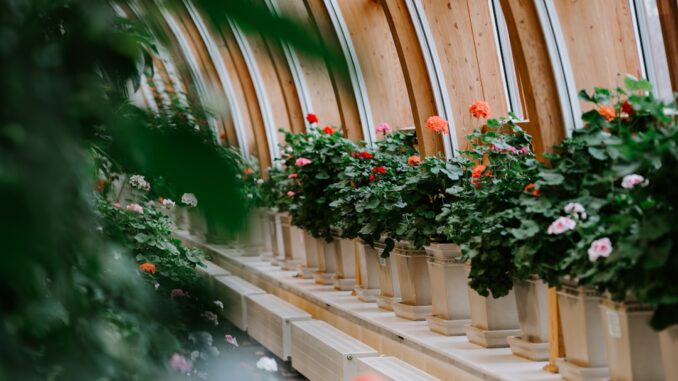
Orangeries have long been a symbol of sophistication and luxury in British architecture. Originating in the 17th century, they were initially designed to house citrus trees during colder months. Over time, these structures evolved into elegant extensions of the home, serving as spaces for relaxation, entertainment, and connection with nature.
The Evolution of Orangeries
In the 17th century, orangeries were primarily functional, providing a controlled environment for cultivating citrus fruits. However, as architectural styles progressed, these spaces transformed into luxurious living areas. By the 18th and 19th centuries, orangeries became integrated into the main house design, serving as elegant entertaining spaces. This transition marked the beginning of the orangery’s journey from a purely functional part of your home to a luxurious modern living space. (reddish-joinery.co.uk)
Designing Your Orangery
When considering an orangery, it’s essential to design a space that complements your home’s existing architecture. Modern orangeries often feature a combination of solid walls and expansive glazing, creating a harmonious blend of indoor and outdoor living. The inclusion of a roof lantern or glass roof can flood the space with natural light, enhancing its airy and open feel. (renaissanceconservatories.co.uk)
Boost your home’s value with a luxurious and stylish orangeryfrom Elegancia.homes.
Year-Round Usability
Unlike traditional conservatories, orangeries are designed to provide comfort throughout the year. The solid walls and roof insulation ensure that the space remains warm in winter and cool in summer. This means you can enjoy your orangery as a usable living space no matter the season, making it a perfect spot for relaxing or entertaining guests. (sunnyholding.co.uk)
Increased Property Value
Adding an orangery to your home can significantly increase its market value. The combination of additional living space and the aesthetic appeal of orangeries makes them an attractive feature for potential buyers. This investment not only improves your home’s functionality but also boosts its resale value, making it a smart choice for homeowners looking to enhance their property. (sunnyholding.co.uk)
Inspiration from Historic Orangeries
To truly appreciate the timeless elegance of orangeries, consider some of the UK’s most iconic examples:
-
Blenheim Palace, Oxfordshire: Designed by Sir John Vanbrugh, this Grade I listed orangery features high arched windows overlooking immaculate formal gardens. Over the years, it has served various purposes, including a greenhouse, art gallery, and now a restaurant. (foxfurd.com)
-
Holkham Hall, Norfolk: A fine example of Palladian revival architecture, this Grade II listed orangery boasts full-length arched windows and elegant proportions, offering far-reaching views over the surrounding parklands. (foxfurd.com)
-
Syon House, London: Home to the Duke of Northumberland, this orangery features a stunning large glass domed ceiling and serves as a botanical powerhouse with an abundance of exotic plants. It’s also used as a venue for entertaining, dining, and socializing. (foxfurd.com)
Modern Applications
Today, orangeries serve a multitude of purposes, from expansive living rooms and dining areas to home offices and gyms. Their versatility allows homeowners to tailor the space to their specific needs, creating a functional and stylish addition to their homes. (tuckerjoinery.co.uk)
Planning and Considerations
Before embarking on the construction of an orangery, it’s crucial to consider several factors:
-
Planning Permission: Depending on your property’s location and the scale of the project, you may need to obtain planning permission. It’s advisable to consult with local authorities to ensure compliance with regulations. (roomoutside.com)
-
Budget: Costs can vary significantly based on size, materials, and design complexity. Establishing a clear budget will help guide your decisions and prevent unexpected expenses.
-
Materials: Choosing the right materials is essential for durability and aesthetics. Options range from traditional brick and stone to modern uPVC and aluminum, each offering distinct advantages.
Conclusion
Incorporating an orangery into your home not only enhances its aesthetic appeal but also provides a functional space that can be enjoyed year-round. By thoughtfully designing and planning your orangery, you can create a timeless addition that reflects your personal style and meets your family’s needs.
References


Given their emphasis on natural light and connection to the outdoors, are there emerging trends in orangery design that incorporate passive heating and cooling strategies to minimize energy consumption and enhance sustainability?
That’s a fantastic point! Sustainable design is definitely gaining traction. Incorporating features like solar shading, strategic ventilation, and thermal massing are becoming increasingly common to maximize energy efficiency in modern orangery designs. It’s all about enjoying that natural light responsibly!
Editor: ElegantHome.News
Thank you to our Sponsor Elegancia Homes
So, orangeries are *the* place for citrus trees… but what about avocados? Think of the year-round guacamole possibilities! Has anyone designed one specifically for the perfect avocado-growing environment?